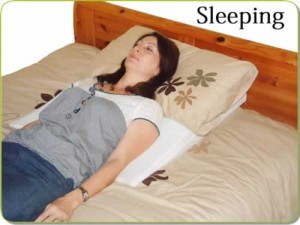Reasons For Pain Behind
Content
- Quick Facts On Pain In The Back Of The Knee:.
- Osteoarthritis
- Kinds Of Arthritis.
- Just How Can You Stop A Popliteal Blood Vessel Apoplexy?
- What Are The Threat Elements?
- What Creates Discomfort Behind The Knee?
Quick Facts On Discomfort In The Rear Of The Knee:.
Symptoms of blood clots normally happen in one leg, as well as can include feelings of discomfort, swelling, warmth, inflammation and also discomfort, along with modifications in skin shade. The pain is most often situated listed below the knee and may enhance in intensity while walking or standing. A cyst is a collection of fluid inside a Check out this site thin layer. A popliteal cyst is a cyst in the superficial clinical depression at the rear of the knee.
Osteoarthritis
It additionally adheres to the HONcode standard and also complies with the concepts of the The Details Criterion. At Bupa we produce a wealth of free health details for you as well as your family members.
Types Of Joint Inflammation.

A medical professional might use this examination to check out the knee and also leg location as well as look for indications of clotting. Ultrasound makes use of here high-frequency sound waves to develop pictures of the within the veins. The ultrasound driver may continue the vein to examine whether blood is flowing appropriately.
How Can You Stop A Popliteal Capillary Thrombosis?
If you create popliteal vein thrombosis or an additional type of DVT and you have a family members history of thickening issues, your medical professional might order an examination for factor V Leiden. A blood https://penzu.com/p/cff40fd2 examination and a genetic examination can aid your doctor determine whether you have this acquired condition. A clot can additionally break out from the popliteal vein. It can then take a trip to the right side of the heart and afterwards to the lungs, where it can cause many circulation and breathing issues. A blood clot in the lungs is called a pulmonary embolism.

- Traditional therapy-- such as rest, ice and also medicine-- is sometimes sufficient to eliminate the discomfort of a torn curve as well as offer the injury time to heal by itself.
- Performing tasks that include hostile turning and rotating of the knee puts you at risk of a torn curve.
- Where two bones meet, each bone satisfies has a protective covering of cartilage material.
- In other cases, however, a torn lens requires medical repair service.
- Added pieces of cartilage, known as the lens, further assistance the knee.
They will certainly ask the individual concerning their signs as well as case history, including any kind of risk aspects for blood clot. Signs and symptoms consist of discomfort, swelling, as well as redness in the leg as well as knee location. Popliteal vein thrombosis can take place due to inadequate blood flow, damage to a capillary, or an exterior injury.
As you grow older, your meniscus compromises as well as degenerates and is more probable to tear with any kind of twisting motion. This sort of injury prevails in professional athletes who run fast in sporting activities like football, basketball, tennis, or track. Extending the muscles out before play can aid stop this injury from taking place. You listen to a pop as well as can not move after you unexpectedly change direction-- often while playing soccer, football, or basketball. You may have torn your ACL, which links the thigh as well as the follow this link shin and protects against the tibia from moving also much Get more info ahead.
Why does the back of my knee and calf hurt?
Sudden activity and overuse are two leading causes of pain behind the knee due to a calf or hamstring strain or cramp, according to Dr. Tanaka. Movements that require pushing off or severe knee bending cause this calf and hamstring pain, respectively.
A posterior cruciate ligament injury is brought on by overstretching or tearing of this ligament, which encounters the knee from the thigh to the shin bone. It typically arises from a hefty blow to the front of a bent knee, often from dropping forwards or during a call sporting activity, such as rugby. Various other common injuries can happen when the knee hits the control panel during an auto accident or when the leg is over-straightened and also the knee is curved backwards.
Why is knee pain worse at night?
“So the knees might actually feel a little bit more swollen. And that's why those symptoms may start then.†In addition, many people tend to be more sedentary in the evening before bed, which can make knee pain worse at night.
Problems Connected With Pain Behind The Knee.
A persistent or lasting PCL injury can trigger discomfort when decreasing from running, strolling downhill or decreasing stairways. Some knee injuries ultimately heal by themselves with rest and also treatment. Others require surgery or other clinical treatments. Often discomfort suggests a persistent problem like joint inflammation that damages the knee slowly in time.
How do I know if my knee pain is serious?
Call your doctor if you: 1. Can't bear weight on your knee or feel as if your knee is unstable (gives out)
2. Have marked knee swelling.
3. Are unable to fully extend or flex your knee.
4. See an obvious deformity in your leg or knee.
5. Have a fever, in addition to redness, pain and swelling in your knee.
More items•
